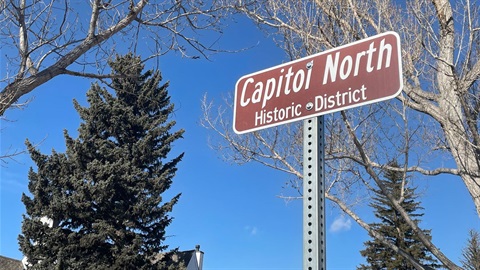Capitol North Historic District officially expands
Published on January 30, 2024

More than a dozen city blocks have officially been added to the Capitol North Historic District following the inclusion of those blocks in the National Register of Historic Places.
The new area includes blocks between Pershing Boulevard and West 29th Street roughly from Randall and O’Neil avenues to between Capitol and Central avenues. It also includes two blocks bounded by Warren and Capitol avenues between 28th and 29th streets. In all, 119 individual properties in this expanded area are contributing structures.
The expansion concludes a process by the City’s Planning and Development Department and the Cheyenne Historic Preservation Board that involved neighborhood residents, City Council, the State Historic Preservation Office, and the National Register Review Board.
“We are really excited with the expansion of the Capitol North Historic District from the original 1980 district,” said Lonnie Olson, a planner in the Planning and Development Department. “In advancing the boundaries, we undertake a sincere commitment to the preservation and celebration of our architectural heritage.”
The original Capitol North Historic District, established in 1980, includes a dozen blocks north of the Wyoming State Capitol. A map of the old and expanded districts is included with this press release.
The district includes homes formerly occupied by many of early Cheyenne’s prominent residents dating back to the Wyoming Territory. Much of the construction in the district was completed by the 1930s. Some of the homes in this district have been restored while others have been maintained over the years and retain their original splendor.
Historic Districts are meant to recognize an area’s historic contribution to the community and typically include a number of “contributing structures,” or specific buildings that contribute to the district’s historic character.
Historic Districts on the National Register do not add any additional requirements for property owners and do not limit how properties may be used. However, if a structure is identified as contributing to the character of the district, Historic Preservation Board approval is required if the structure is proposed to be demolished or relocated. In certain cases, property tax credit programs exist that can help property owners rehabilitate their property.
Cheyenne has seven historic districts: Capitol North (1980, expanded in 2024), Downtown (1974), Rainsford (1984), Lakeview (1996), South Cheyenne (2006), Moore Haven Heights (2008), and Dubois Block (2014).
In addition, Cheyenne has a local ordinance historic district, the Governor’s Mansion Protective Area, which requires Historic Preservation Board approval for any new construction, significant alteration to a structure, or improvements on any property located within the area. The area is bounded by 22nd Street on the north, 20th Street on the south, Evans Avenue on the east, and House Avenue on the west.
To learn more about historic preservation in Cheyenne, visit www.cheyennecity.org/hpb.